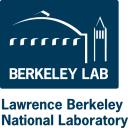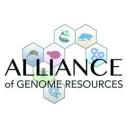NOVELTIES
The Arabidopsis Information Resource (TAIR) maintains a database of genetic and molecular biology data for the model higher plant Arabidopsis thaliana . Registration not required.
Click here for more informationsPublished on 2010-09-09 10:03:29
The Berkeley Drosophila Genome Project (BDGP) is a consortium of the Drosophila Genome Center whose goals are are to finish the sequence of the euchromatic genome of Drosophila melanogaster to high quality and to generate and maintain biological annotations of this sequence. Registration not required.
Click here for more informationsPublished on 2010-09-09 09:56:19

Add to my favorites
Remove from my favorites
Drosophila
Category: Model organisms
Subcategories: Drosophila
A Database of Drosophila Genes & Genomes Registration not required.
Click here for more informationsPublished on 2010-09-09 09:56:05
WormBase is the repository of mapping, sequencing and phenotypic information for C. elegans (and some other nematodes). The worm informatics group at the Sanger Institute play a key role in assembling the whole database (a new release occurs every three weeks). Registration not required.
Click here for more informationsPublished on 2010-09-09 09:55:45
A database of behavioral and structural anatomy of Caenorhabditis Elegans Registration not required.
Click here for more informationsPublished on 2010-09-09 09:55:31
BrainMaps is an interactive multiresolution next-generation brain atlas that is based on over 20 million megapixels of sub-micron resolution, annotated, scanned images of serial sections of both primate and non-primate brains and that is integrated with a high-speed database for querying and retrieving data about brain structure and function over the internet. Registration not required.
Click here for more informationsPublished on 2010-09-08 03:40:14
The main sources of TheFreeDictionary's Medical dictionary are The American Heritage® Stedman's Medical Dictionary, Second Edition and Dorland's Medical Dictionary for Health Care Consumers, which provide authoritative descriptions of medical conditions, medications, anatomical terms, noted medical personalities and much more. The American Heritage® Stedman's Medical Dictionary is ideal for both medical professionals and anyone who wants to keep up with the burgeoning array of terminology found in today's medical news. By avoiding jargon, the dictionary offers concise and easily accessible information for users searching for descriptions of over-the-counter or prescription medications, medical abbreviations, test procedures, medical research topics, or illnesses. Over 45,000 entries from all areas of medicine and healthcare are included. Dorland's Medical Dictionary for Health Care Consumers is based on the content of Dorland's Illustrated Medical Dictionary, which has been the premier dictionary for health care professionals for over 100 years. Created especially with the health care consumer in mind, Dorland's contains approximately 40,000 entries and more than 350 illustrations and provides authoritative, concise definitions for a wide range of terms used in the health sciences, including those related to anatomy, physiology, diseases, drugs, tests and procedures, and much, much more. The Medical dictionary also draws from The Gale Encyclopedia of Medicine,Second Edition, which provides information on nearly 1,700 common medical disorders, tests, and treatments, and bridges the gap between basic consumer resources and highly technical professional materials. Additional source materials include Mosby's Dental Dictionary, Second Edition, a compilation of 2,100 dentistry-related definitions; Mosby's Dictionary of Complementary and Alternative Medicine, which catalogs terms used in non-conventional medical and healing practices; and Saunders Comprehensive Veterinary Dictionary, Third Edition, which includes information on large and small animals and features more than 65,000 entries and over 1,000 new terms. Registration not required.
Click here for more informationsPublished on 2010-09-07 12:31:19
The A.D.A.M. Medical Encyclopedia includes over 4,000 articles about diseases, tests, symptoms, injuries, and surgeries. It also contains an extensive library of medical photographs and illustrations. Registration not required.
Click here for more informationsPublished on 2010-09-07 12:31:07
With more than 900,000 human-edited definitions, Acronym Finder is a largest dictionary of acronyms, abbreviations, and initialisms. Combined with the Acronym Attic, Acronym Finder contains more than 4 million acronyms and abbreviations. Registration not required.
Click here for more informationsPublished on 2010-09-07 12:30:17
This data base supported by NIH, provides international bibliographic information in the form of abstracts on dietary supplements. Registration not required.
Click here for more informationsPublished on 2010-09-06 10:17:31

Add to my favorites
Remove from my favorites
Geneontology
Category: Protein informations, Gene information search
The PANTHER (Protein ANalysis THrough Evolutionary Relationships) Classification System is a unique resource that classifies genes by their functions, using published scientific experimental evidence and evolutionary relationships to predict function even in the absence of direct experimental evidence. Registration not required.
Click here for more informationsPublished on 2010-09-03 12:03:01
VISualization Tools for Alignments: VISTA is a comprehensive suite of programs and databases for comparative analysis of genomic sequences. Registration not required.
Click here for more informationsPublished on 2010-09-03 10:45:03
The Human Gene Mutation Database (HGMD) represents an attempt to collate known (published) gene lesions responsible for human inherited disease. Registration not required.
Click here for more informationsPublished on 2010-09-02 10:42:24
The information in the Mitelman Database of Chromosome Aberrations and Gene Fusions in Cancer relates chromosomal aberrations to tumor characteristics, based either on individual cases or associations
Click here for more informationsPublished on 2010-09-01 10:51:02

Add to my favorites
Remove from my favorites
The Alelle Frequency Database
Category: Genetic variations
ALFRED has been designed to make allele frequency data on anthropologically defined human population samples readily available to the scientific community and to link these polymorphism data to the molecular genetics-human genome databases.ALFRED's focus is on allele frequencies in diverse anthropologically defined populations. It is not a compendium of human DNA polymorphisms but of frequencies of selected polymorphisms with an emphasis on those that have been studied in multiple populations. Registration not required.
Click here for more informationsPublished on 2010-09-01 10:41:01
In this site, maintained by the Public Health Agency of Canada, it's possible to retrieve essential information on the most common infectious diseases. Registration not required.
Click here for more informationsPublished on 2010-09-01 09:11:00
The UCSF Occupational Health and Safety Program is intended to provide guidelines for establishing a high level of safety for all individuals who are involved in the care and use of research animals. This Program provides guidance in all areas of occupational health and safety and environmental protection. It is organized by types of hazards and risks, followed by the educational and preventive programs that address those hazards and risks. Registration not required.
Click here for more informationsPublished on 2010-09-01 09:05:09
The NIOSH Pocket Guide to Chemical Hazards (NPG) is intended as a source of general industrial hygiene information on several hundred chemicals/classes for workers, employers, and occupational health professionals. Registration not required.
Click here for more informationsPublished on 2010-09-01 09:01:19
Stem Book is an open access collection of invited, original, peer-reviewed chapters covering a range of topics related to stem cell biology written by top researchers in the field at the Harvard Stem Cell Institute and worldwide. Stem Book is aimed at stem cell and non-specialist researchers. Registration not required.
Click here for more informationsPublished on 2010-09-01 08:58:57
This site maintained by research labs at UCSD provide and introduction tu muscle physiology and design. Registration not required.
Click here for more informationsPublished on 2010-09-01 06:30:18


















